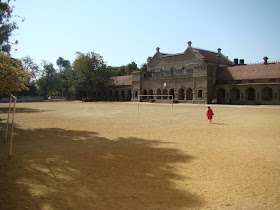The Grim Reality of Water Scarcity in Mount Abu.
 |
| Dhobis washing clothes in stagnant water |
Welcome to Mount Abu, the Oasis of Rajasthan. The city of Mount Abu has something in it for everyone. Come share our Abode of the Gods through my pictures, videos and tourist information. An insightful Mount Abu travel guide that will cover the best places to visit in Mount Abu, popular tourist attractions, things to do, how to reach, and the best places to stay in Mount Abu, Rajasthan.Ideal place for your summer retreat. It offers trekking, rock climbing and camping. Rajasthan Gem in Tourism
 |
| Dhobis washing clothes in stagnant water |
 Neem Trees Arna Village
Neem Trees Arna Village
 Saurabh's house Neem trees
Saurabh's house Neem trees Plummy from Arna Village
Plummy from Arna Village The Golden Horn from Tiger path
The Golden Horn from Tiger path

 Common Shrike
Common Shrike


















Edmund is honoured as the founder of the Christian Brothers. Today to pay homage to his vision and generosity, Father Suprien unveiled a fibreglass statue of his in front of the brother’s cottage a fitting place for a man who inspired a mission that continues today on all continents through the ministry of Christian Brothers and laity called to serve in this vocation of Catholic Education.
Today this order has spread to 28 countries and his vision of helping and educating the poor can be seen all over the world. Father Suprien gave a short speech to all the students and staff gathered around, after a short prayer, all dispersed to participate later in the day in storytelling, speeches, poetry, mime and prayer about the past, present and future. Speaking on behalf of the Christian Brothers, the Principal Ms Mary Joseph thanked the staff and students for their generosity and hard work in arranging the event.
When I reached the school there was music blaring and I could see the students having lunch not in the refectory, but out in the open picnic style. Laughter, music and celebration were the order of the day. Today is the feast day of Edmund.